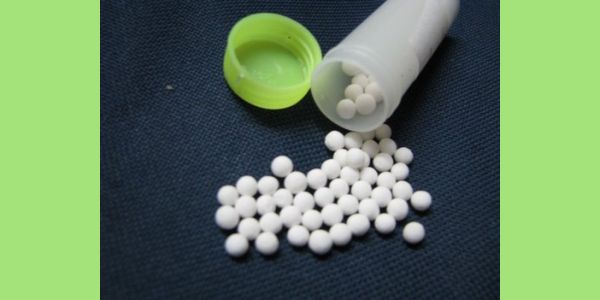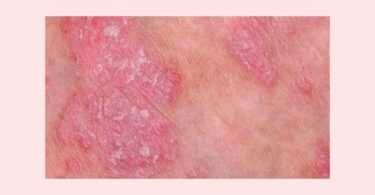Key words: plants, animal, minerals, development, levels, rodents, row, mammals.
The educing fact about science is that it gets better and much more worthwhile for the human race. Never did man stop at a way post and wonder, “Oh! I think this is enough.” The hunger to know more and to unravel more that has to do with the riddle of life has ever intrigued all men. I was no different, coming from a background filled with this same desire and lore. My mind always wandered and sought questions to quench my thirst for more. My early years in Homoeopathy were dedicated to gathering the vast existing knowledge that already been conferred upon us by stalwarts. Later on my husband, Shachindra and I researched throughout our practice and developed a unique approach to understanding the human mind and its behavioral prototype.
Homoeopaths give great importance to understanding the mind and to then channelize their search for the exact simillimum. We have worked on this doctrine in a particular manner so as to give us quick and effective results.
Jan Scholten was one of the very first to classify the various elements (starting with minerals) using Mosley’s modern periodic table. He studied all the minerals in details and found a correlation, a common theme that runs all along a row or series that can be seen as the different levels at which the development around the specific theme takes place.
This was the clue we needed. According to our method, we understand every individual’s personality and behavioral pattern through the connections they make to different kingdoms. Their behaviour resonates with either a plant, animal or mineral in every walk of life. I have found through our extensive research and clinical back up of two decades of my practice, that depending on circumstances, one behaves in a particular manner and at that time the impression it gives us resonates with a plant, animal or mineral.
The animal kingdom, according to my work, has been classified into 7 levels. These levels correspond to the seven levels of human development. The levels of development are not in linear fashion, they are more circular. So the seventh level goes back to the first level, everything that begins has to end. (You can read my new theory in detail from my book- Homeopathy and Pattern in Mammals). Here I am going to extensively talk about the group rodents, which corresponds to the 4th level of human development and falls in the 4th Row of the periodic elements (for comparisons). The 4th Row has to do with structure and security. The struggle to make an identity is complete, and here lies the sense of security, the feeling I am surviving now, but what about tomorrow? How am I going to fend for tomorrow? How to make my current existence more stable?
People who need these remedies are very meticulous about their work and are exhaustive workers who love routine, and any change from the routine will cause displeasure and unease in these individuals. They work by the clock.
These could be the exact same words of any of the Row 4 patients walking into your clinic.
Themes to spot a Row 4:
Instinctive reactions, impulsive behavior, hectic pace, tremendous hurry and restlessness, monotonous, repetitive and meticulous actions, feeling of being small, unwanted like a pest and high sexuality.
To elaborate more on the Row 4 group (here rodents) of remedies, let’s look at the following case.
A 43-year-old woman with irritable bowel syndrome, high blood pressure since the age of 24 and very heavy menstrual bleeding due to intramural fibroids comes to me. She has been on anti-hypertensive drugs for twenty years and been in a depression since her adolescence.
As a general protocol I record my cases and this is what she said at the start of taking the case: “Why am I being taped? I don’t like being in the spotlight. I have barely managed to come to the clinic because I don’t like to leave my house.”
She was a teacher by profession and going out would be a nightmare for her. Her mouth would get dry even with the thought of it and she was always very anxious. She was anxious while eating, literally gulping down her food.
D: Tell me a little bit about this – ‘I have a very anxious nature.’ Describe this.
P: I tend to panic in social situations. It is very difficult for me to socialize. If I go out somewhere, it takes me a long time to gel with anybody. I tend to freeze, especially in a crowd.
She has been teaching for almost 30 years, but she can only teach while in the class. Once outside the class and the children greet her, she does not respond, why? I asked her and she said it’s because she is scared. If a guest comes home, she can prepare food for them but to go in front of them and serve them food is difficult. This has been since she was a child – ‘me coming into the spotlight’ – I cannot handle that.
D: What is the experience of ‘being in the forefront, in the spotlight’?
P: Getting humiliated, making a big error or blunder. I am capable of making silly blunders. I have this fear of failure
D: What is the experience of failing?
P: I can’t forget the times when I fail. I can recollect everything – at what age it happened, people laughing – everything. As if somebody has slapped me in the face. I have developed a brooding habit. If something goes wrong, I think about it the whole day.
She lived alone with her mother who separated from her father many years ago. Her father was a very difficult man to live with. Her elder brother lives separately with his family.
So, we see that the fear of failure is not the fear that she has not done her duty well as a person (which would put her in row four of the mineral kingdom) but it is the fear that if she fails, people might attack her or slap her. It’s fear of the unknown that’s the animal kingdom.
She closes her eyes and describes the whole experience and everything around her. She exclaims that, it’s a feeling of complete helplessness. The situation is taking advantage of me. I am standing at the bottom of it, lonely and looking for some security
This tremendous fear of criticism also looked like Staphysagria but after the ‘slap’, she said ‘someone is taking advantage of me. I wish there was a hole in the ground where I could disappear.’ ‘Somebody is doing something and I want to say something but I don’t’ – this is very much like an animal because animals have this conflict of ‘fight or flight.’ Very often patients in the prey category say, “I want to talk. I want to fight back and back answer, but I know I can’t, so I must flee.’ So, here she is showing characteristics of a prey-category animal, which is passive by nature – she wants to but she doesn’t have the capacity to fight back. She has to be somebody who is very small, who freezes, who can hide in a hole, who can gulp food fast… Though she says she prefers solitude, our actual feeling and observation is that she is scared. She said she sleeps with her mother but in a new place or situation, she doesn’t sleep with any other person. So, it’s not really solitude that she wants; she wants to be safe. Somehow, there must be a threat from anyone close by causing a need to be alone. We now know that she is an animal that belongs to row four because she has this fear of failure and a need for protection and security that she gets when she is at home.
She doesn’t enjoy solitude but there is a fear that people will constantly criticise her and judge her when she is with others. Therefore, she would rather be alone. At the beginning of the case, she had said she wanted some medicine to help her to mingle with people better and be able to go out more. So, she really wants to mingle and have a group but she is scared of being judged and criticised by others.
Her self-esteem is very low – ‘I am weak and I have many insecurities and if I am exposed, then people take advantage of me.’
Till now, we have gathered that she is a prey animal that is small and goes to hide in a hole when in danger. She would like to mingle and be with people, so she has features of a mammal as well. All this makes me think of rodents, rabbits (lagomorphs) and insects (piercing and destroying) and molluscs (she speaks of an outer layer and an inner part that is soft and tender). Rodents and rabbits (lagomorphs) have this fear of making a blunder and of criticism because criticism means people are going to attack them.
Insects, on the other hand, have no mammal-like features. They have no intelligent communication for love, care and warmth like mammals have. Insects live in colonies and communicate through chemicals. Insects are also in row four because of this theme of doing and working – monotonous, routine working. Doing work given to them by nature and in a particular set up is an issue for them. Insect energy is more tubercular with physical restlessness – more chaotic. If she were an insect, she would have described the cocoon and the opening out of it in more detail. Here, we see that she left the cocoon and talked about being in the room on her bed.
Molluscs also have a shell and the animal inside the shell is lumpy, soft and gelatinous. They too can talk of safe structure and safe boundaries. They are very primitive with virtually no nervous system… no communication, love or warmth. ‘So long as structure is there, I am safe. I could be in danger the moment that structure is gone.’ Molluscs have a hard outer shell. Here, she says that the there is an outer thin layer, which comes off in layers.
Rodents, on the other hand, will have a need for friendship, love and warmth. Eating fast goes in favour of rodents. They have to come out and eat fast and go back to their safe zones quickly; otherwise, they will be attacked. Rodents build structures (that is why they belong to row four). She says that the outer layer is thin and it comes off. It is almost like skin. This is a feature of rodents in nature, as often they are pierced by the talons of the birds of prey.
So, now we know she can’t be a mollusc because a mollusc would talk of an outer layer that is hard and an inner layer that is soft.
D: You said, “I brood a lot.” You said people take advantage of you and you want to escape and hide. What would you want to do?
P: I would want to take better charge of my life. I want to be able to help others. I can’t do things that others can do. I wish I could be able to take care of my mother.
Again, we want to be sure if she really is a ‘people’ person and is just scared of being with them, or if she is a solitary person. She confirmed it by saying that she likes to be with someone but at the same time scared to be with them. She addresses her dependency on her mother. And since her mother is almost on her death bed, she says she also has this fear that she will have to cope without her mother.
She also gives me a glimpse of how easily she would be subdued by her seniors at school, cannot stand her ground, freezes completely. Small animals like rodents and lagomorphs are frequently run over. This again reaffirms our choice of the rodentia family, a small prey animal of row four with very low self-esteem –, the going into the hole, the tearing off of layers, eating fast – everything now points to the rodent. We now want to know which rodent she needs. Some rodents are solitary by nature. Mouse and mouse-like rodents live in groups. She also seemed so scared of everything, so I was wondering if she could need a mole, which is not a rodent, but very close to it and is actually an insectivore. She seemed so scared of everything. Moles are extremely solitary and will not travel from their holes for days or months at a time. What is peculiar in her is that even though her family members are sitting in the living room, she would prefer to sit in her room near the wall (her secured place). She had said that she wanted our help for her to be able to mingle with people, so I felt that she is somebody who likes a group, but is just terrified when in one. Now, this again puts her in the group of rodents and rabbits. Rodents and lagomorph individuals feel that people are constantly assessing them and judging them. Panic and freezing are other rodent qualities.
I went with the remedy mouse in 200 potency because she was very emotional. We went to IM after a while.
FOLLOW UP:
Her bleeding improved dramatically and so did her IBS. She started to handle going out of the house better. She has become much more energetic, something that has been clearly visible to us during her follow-ups. She no longer has to rush home because of the urge to stool. The depression didn’t seem to improve as much as we expected, so we gave her a 1M potency. The blood pressure improved slightly with 200 and improved very well with 1M. She was off her anti-hypertensives after seven months of the first dose. I do feel she might need a 10M potency because her depression seems very severe and it’s been there since childhood linked to her parents’ separation.
Follow-up after 1M
P: My sister-in-law and brother found a change in me. They said that I am talking more and not sitting alone anymore. My panic attacks have also improved. My friends have also said that I look much better now. This is the time when her mother’s health deteriorated severely, but she said she could handle it much better.
“I would never have been able to go through all this otherwise. I would have totally collapsed.”
Her fibroids have reduced as well. Her hair fall also improved but the stress about her mother’s health made it recur to some extent. In a later follow-up, she said one of her supervisors had scolded her over what she felt was improper correction of students’ answer sheets. She had felt like that woman could have torn off her layers but this time it did not seem to affect her.
Rodents have very small self-esteem and they would just want to disappear from the face of the world and hide. And this was the main core of the case here. The animal energy was vibrantly seen in this case. Had she not been having this fight and flight, the animal conflict of fear and at the same time fighting back, and having high sensitivity and immense fear and submissive nature, she could have been a plant.
The case excerpts here have been taken from my latest book but changed and adapted for the article. For more on my work on mammals read my latest book now available.






Very thought provoking article. Thank you for sharing this Doctors.
I am a practising homeopath and i find this remedy interesting. Can you please tell which pharmacy is producing this medicine, ‘Mouse’ in India.